Retail executives have work to do if they want to take a bigger bite of the digital apple. Your traditional strategies for ecommerce success will no longer cut it in 2025 and beyond.
The ecommerce market has never been more competitive. That apple? Much of it is already spoken for. Amazon will continue to dominate in 2025, growing ecommerce sales a projected 10.5% this coming year. It will increase market share in eight of ten product categories. Yes, Amazon faces tough competition from other big players; but even its top challenger Walmart can’t sniff Amazon’s total ecommerce market share.

First, Understand Modern Consumer Behavior
This leaves an increasing number of retailers to snatch up ever less available market share. All of which makes for an intensely competitive environment, in which ecommerce retailers must account for new trends in technology and consumer behavior.
Consumers Expect Outstanding Experiences
The Coveo 2024 Commerce Industry Report found that 91% of consumers expect the online buying experience to be better than, or equal to, the traditional in-store experience.
Yet many still encounter the same old problems when buying online. Too many choices. Difficulty filtering options. Poor site speed and inadequate search experiences. These might seem like table stakes for ecommerce success in 2025, but many retailers still struggle to get them right.
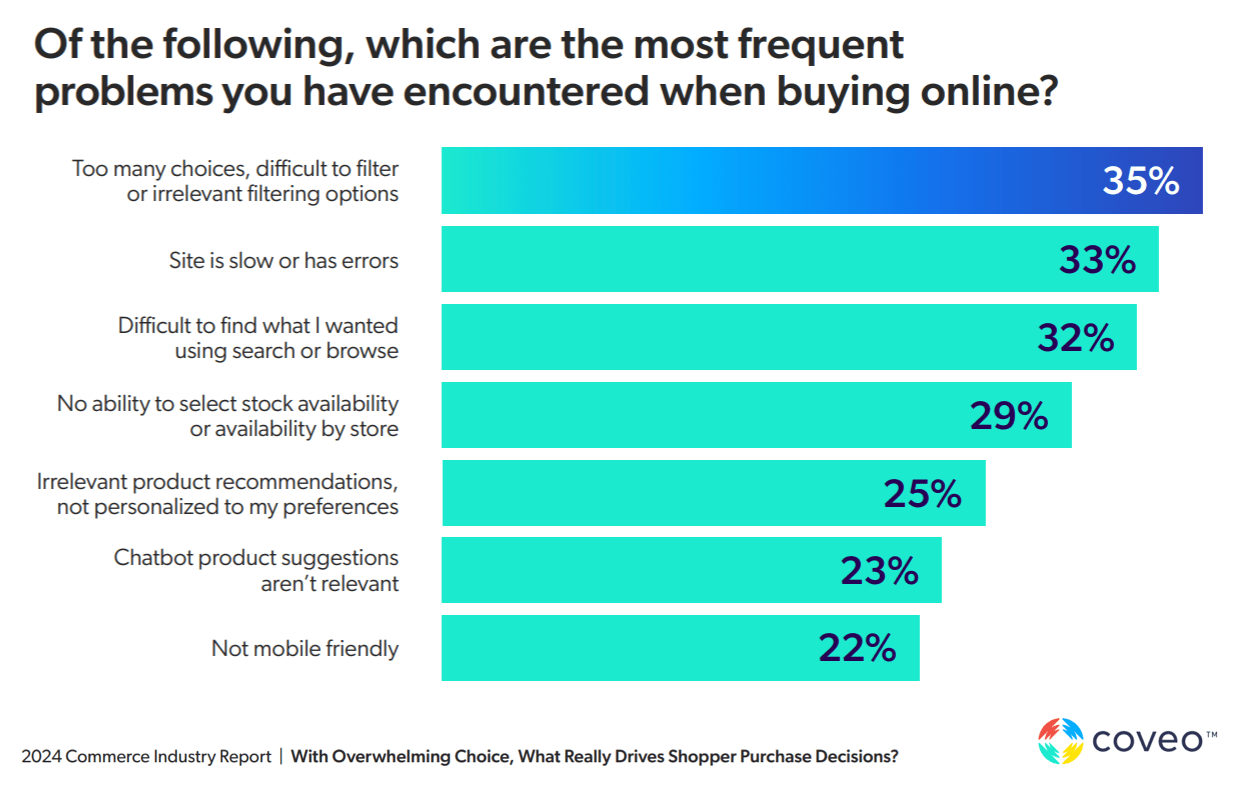
Young adults in particular demand more of their ecommerce experiences. Online shopping behaviors vary for Gen Z, for example. But a vast majority want better deals, deeper personalization, and streamlined experiences—and they’re willing to share their personal data to get it.
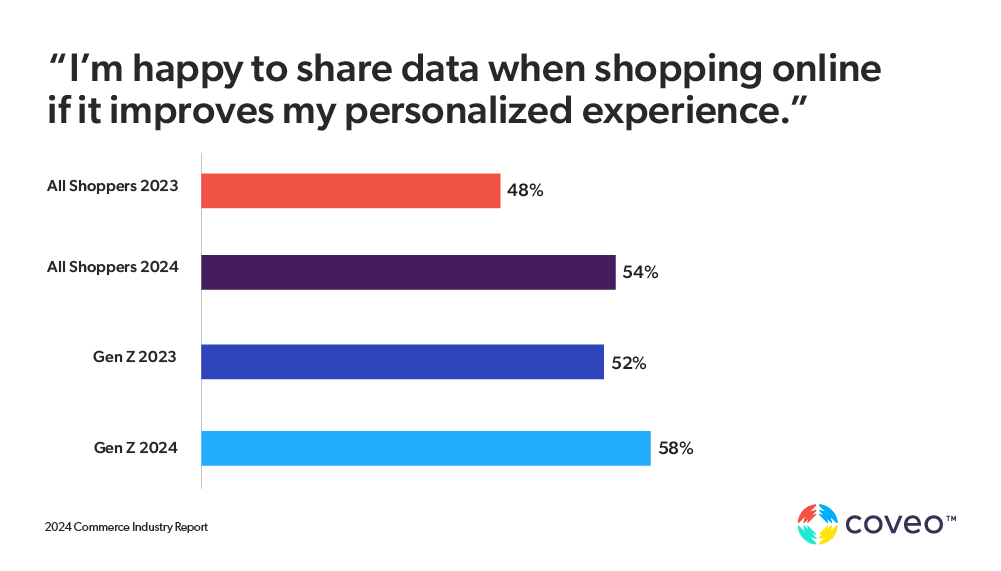
Social Media Opens Important Doors (but Not All)
More than five billion people use social media worldwide, a number that is expected to grow in coming years. A lot of them use social media to discover and buy products online, too.
But only 14% typically buy those products through the social media site itself. Nearly half navigate through to the retailer’s website to make their purchase. Once again, we see the criticality of keeping the ecommerce website experience in tip-top shape—intuitive, personalized, and highly convenient.
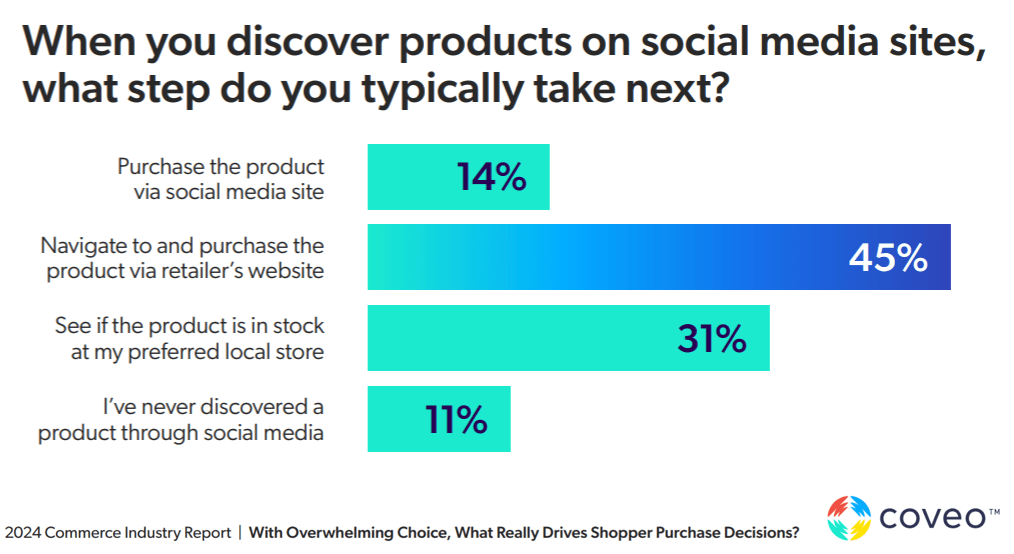
Generative AI for Guided Shopping
More than half of consumers expect Generative AI (GenAI) to be part of their online shopping experience. They’re expecting this technology to help educate them about products, provide conversational assistance, and guide them to the right purchase.
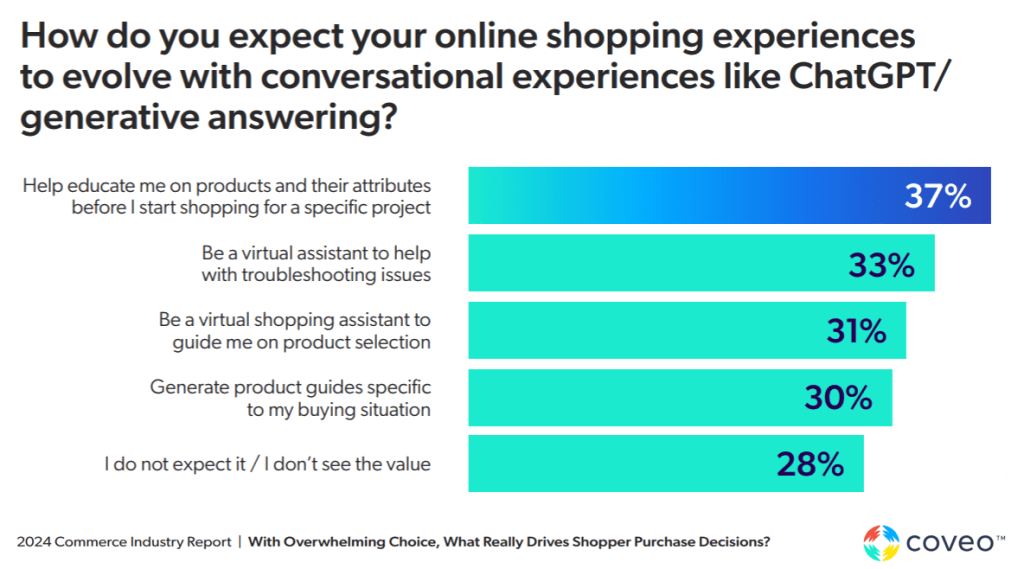
Focus on 6 Core Ecommerce Strategies
As to how to be successful in ecommerce, the answer is manifold. All top ecommerce stores are data-driven, for starters. But there’s more to it, at least according to Neil Hoyne, Chief Measurement Strategist at Google and author of Converted.
Coveo sat down with Neil Hoyne for an in-depth discussion on the topic. Below, we’ll explore the six most salient strategies discussed during this conversation.
1. Focus on What Really Matters: Customer Experience
The pandemic proved many retail heads wrong. “Consumer preferences are more durable than we thought,” says Hoyne. According to a recent Pew Research study, ecommerce sales have leveled out to just above pre-pandemic levels.
As it turns out, in-store experiences aren’t going anywhere. I harken back to the Coveo 2024 Commerce Industry Report, which found that 26% of shoppers still prefer to browse and purchase items in-store, while 29% prefer to browse in-store before completing the purchase online.
With this in mind, Hoyne suggests companies refocus on the larger, longer-term changes that will influence online shoppers. He points to the lack of continuity in customer experience as a lasting issue facing ecommerce businesses.
“Isn’t it concerning when you go to a retail store, buy a product, then go to its online store and that brand has no idea what you purchased?” he asks.
The truth is, people look at brands as brands, not the organizational units that comprise them. Sometimes, a potential customer expects to be recognized by the ecommerce website after an in-store visit. According to Hoyne, the ecommerce success will be the one that delivers on this expectation.
Will this require monetization strategies, automation, and additional investments? Certainly, but with one caveat. “The goal is to be 1% higher than your company is today,” says Hoyne. “Are these customers 1% more valuable today than the ones you acquired previously? And to do it in a thoughtful and productive way that’s good for user experience and the online business.”
Relevant Viewing: LCBO’s AI Strategy for Driving Customer Value & Business Growth
2. Optimize for Lifetime Value (LTV)
The shopping cart experience provides a useful window into short-term optimizations vs. lifetime value. For example, take the customer that adds items to a shopping cart, leaves, then comes back and removes one (but not all) items.
A short-term optimization might be to tinker with some part of the user experience before and while customers interact with their cart to reduce cart abandonment rate, right?
Through the lens of LTV-oriented optimization, on the other hand, a retailer might see this behavior as a customer’s commitment to exploring and purchasing the right mix of products—they’re curating their cart to maximize customer satisfaction. This commitment might indicate a more valuable customer in the long term signaling an opportunity to offer or prompt the customer with a loyalty program.
In his work with the world’s top retail brands, Hoyne likes to pose a simple question. “I ask, ‘do you believe that some existing customers are more valuable than other customers?’ When they say yes, I ask why they’re investing in all customers equally.”
A LTV optimization strategy for a successful ecommerce business will focus on what makes the high-value customers so unique. “It’s all in the transaction data,” says Hoyne. “It’s what they’re doing on your site and allowing the data to show you the behaviors of your high-value customers.”
That’s part one. Part two is how to act on these customer behavior insights. How can you promote the right products to an existing repeat customer (high-value) or engage with them differently?
On the flip side, what if the entire customer experience is actually detracting from LTV? Let’s not forget the post-purchase experience, which is still a rather neglected aspect of the overall journey. When people can’t find what they’re looking for on their own, or struggle to complete case submission forms, they develop a negative perception of the brand.

3. Apply the Data (No, Really)
“Take 100 decisions that you may make in a day and six that you make will be made based on data. More than half will be made based on intuition,” says Hoyne.
He’s alluding to the idea that retailers are perhaps less data-driven than they think—and that even a small step in the right direction can help them be that business model that they envision themselves to be. To get there, as an executive, one ecommerce business priority should be to double down on first-party data.
“It’s understanding your customer—information about their expectations, needs, and interests—so you can personalize that experience,” says Hoyne. All it takes is knowing just a little bit more about customers than the competition.
The good news is that machine learning (ML) can observe a lot of this customer data. The key is applying that data through automation and ML in next-generation ways. This often requires a human touch.
If done well, however, the results can be game-changing. AI-powered personalization with machine learning to make it better over time reduces the cost of acquiring new customers, possibly up to 5%.
The same McKinsey study that shared this good news also credits advanced personalization with revenue and retention boosts of up to 15%. With an overall cost savings potential of 30%, most companies can’t afford to skip this next generation of tech in their ecommerce platform and marketing strategy.
One very good example of personalization at work is with product recommendations. Sure, you can suggest batteries to somebody buying a toy online. But what about the products they’re unlikely to discover on their own, but that increase the chances of an incremental purchase? Knock-knock, that’s customer loyalty at the door.
This scenario doesn’t even consider the next-level applications of AI that are happening right now. Generative AI, like that used to fuel Gemini, CoPilot, and ChatGPT, is available to organizations for internal knowledge sharing and as an ultra-responsive customer support tool. This tech is in the early stages but is already showing results for the brands that use it.
Relevant Reading: How B2B and B2C Commerce Can Use Coveo Generative Answering
4. Test More and Learn From the Results
It’s remarkable how many organizations don’t test enough because their people don’t have enough time. People have hypotheses about what drives value long term, sure, but they’re too heads-down on their day-to-day work to act on them. This can negate the impact of even the most successful ecommerce strategies.
Yet Hoyne argues that success in ecommerce depends on how fast you can test and how many tests you can run. In his view, experimentation is the ultimate guide. It can’t be haphazard, nor wishful thinking — it needs to be embedded into processes and marketing.
From their teams, executives should ask for (and incentivize) more than just hypotheses. Ask for and collect:
- The hypothesis
- The observed data
- How to test the hypothesis
- What the company would do differently if the hypothesis is true
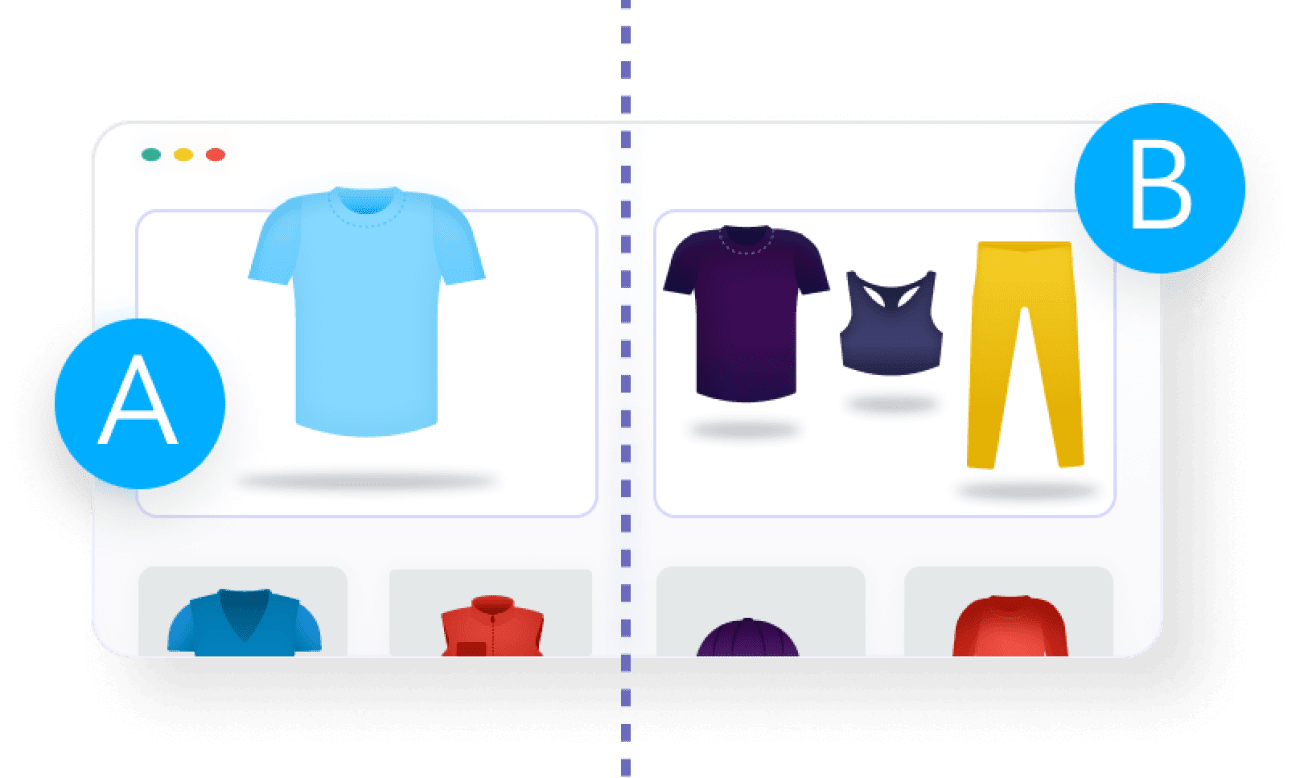
From there, says Hoyne, executives have a list of viable hypotheses to work with. At this point, it’s their responsibility to find and alleviate the bottlenecks preventing these tests from being carried out.
“Most retailers run three to four tests a quarter,” he says. “If you can find a way to generate six, you’ve doubled the rate of innovation.”
Beyond increasing their volume of quality tests, the top ecommerce companies do two other important things:
- Run tests side by side
- Go back and learn from the tests, even those that fail to identify potential success factors to test for in the future
Relevant Reading: A/B Testing Concepts List: Your Must-Read Guide to Online Experiments’ Terminology
5. Choose Advertising Partners Wisely
Most of the top retailers weave advertising through their ecommerce experiences. The best blend in the most relevant ads with the non-ad results.
“Most retailers can’t do all this and rely on a third party to provide the ad business – a bolt-on piece – that’s sometimes okay, sometimes extraordinarily disruptive.”
Hoyne urges us to treat these interactions as sacred and valuable. Ads are reflective of a brand, and sometimes what’s best for profitability isn’t best for customer experience.
“If you’re going to let other people join in that experience,” he says, “you better make sure they meet the standards of what you’re doing. And that standard shouldn’t just be to poke the customer to get them to spend more money.”
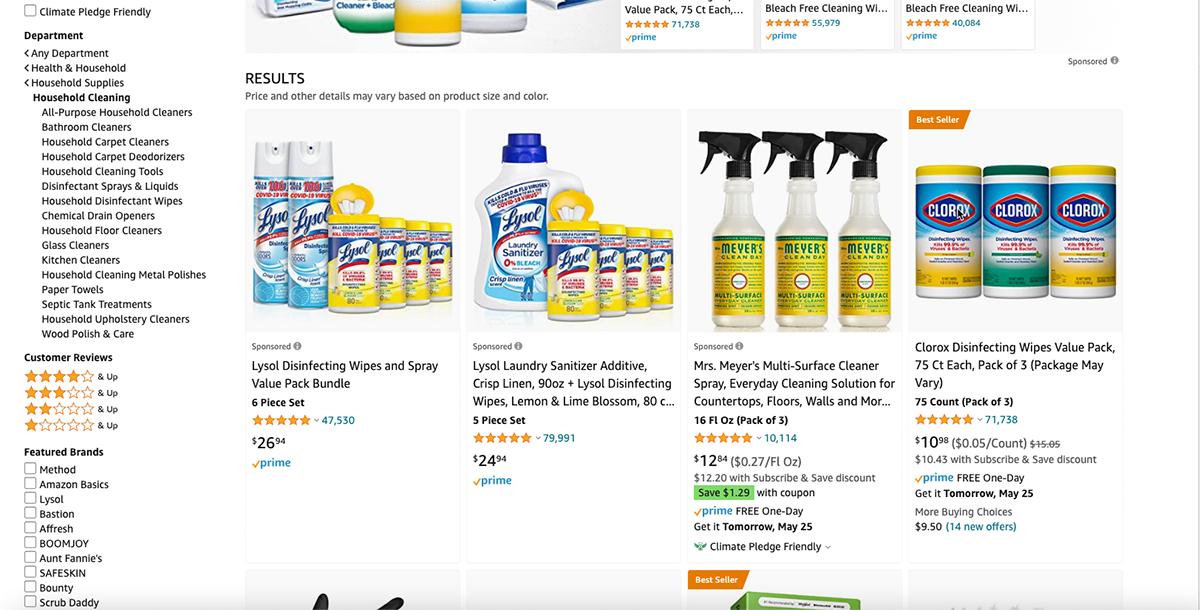
6. Leverage Your Machine Learning with Purpose
It’s easy for executives to see an ecommerce search results page driven by thousands of rules, then ask how many analysts they need to do some search engine optimization. The alternative is a dynamic recommendation engine that takes what’s already there and makes it more efficient — automatically.
“It’s the whole idea of optimizing the exact right product recommendation and search for one individual,” says Hoyne, “but also making sure we show stuff that makes us money for that one individual transaction. One of the reasons people don’t make money in ecommerce is they’re not showing the right stuff.”
Even in the era of data privacy, where you might know very little about customers from the outset, customers do send signals. In fact, there’s a growing willingness among ecommerce shoppers to share personal data, as long as it improves the experience.

“Take signals from across the customer journey – even anonymous customers send — where they came from, the products they’re looking at, what customer reviews they are looking at and resonate with, and start building that history.”
In exchange for a personalized experience, many customers will provide more data.
“It’s like going to your favorite restaurant,” says Hoyne. “They know what you like and even though they might make more money, the exchange is mutual, as opposed to being handed a menu each time you show up.”
Hoyne says that ML and automation shouldn’t be viewed as a cost-cutting initiative, but as an efficiency to improve productivity. Too many companies get caught in the cycle of more rules, manual optimizations, and new-hires to sustain it all. Not every component needs to be done manually.
It can be automated under the right conditions — and to the customer’s delight.


